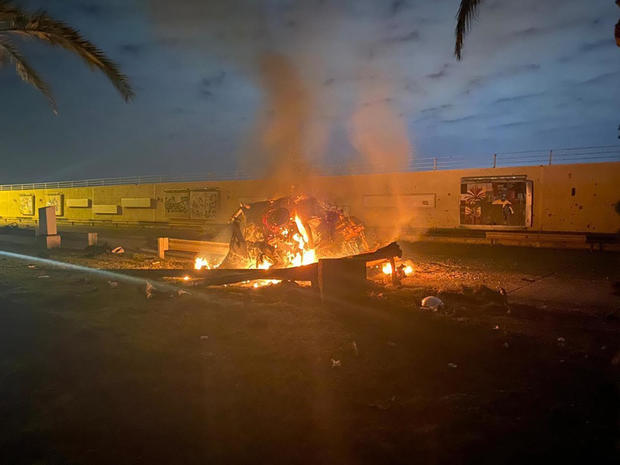In 2007, U.S. commandos watched as a convoy carrying a powerful Iranian military leader made its way to northern Iraq. It was a prime opportunity to take out Gen. Qassem Soleimani, who had been accused of aiding Shiite forces that killed thousands of American troops in Iraq.
But ultimately, military leaders passed on a strike, deferring to deep concerns about the potential fallout of such a provocative attack.
“To avoid a firefight, and the contentious politics that would follow, I decided that we should monitor the caravan, not strike immediately,” retired Gen. Stanley McChrystal wrote last year in Foreign Policy.
Trending News
Fears about the repercussions and reverberations of a targeted killing of Soleimani persisted throughout the administrations of President George W. Bush and President Barack Obama according to officials who served under both. Soleimani, they calculated, was just as dangerous dead and martyred as he was alive and plotting against Americans.
That approach came to an end this week when President Donald Trump authorized an airstrike that killed Soleimani.
But some former administration officials argued that despite Soleimani’s role in orchestrating deadly attacks on U.S. troops, Mr. Trump’s decision may ultimately put Americans in the region at heightened risk.
“Previous presidents have had the opportunity to take measures like what we saw last night but have held back because of the risks entailed and the questions that were there about where this would all lead,” said Derek Chollet, an assistant secretary of defense during the Obama administration. “Unfortunately, those questions are not any clearer today.”
Indeed, Mr. Trump’s strike against Soleimani, the head of Iran’s elite Quds Force, thrusts Washington and Tehran into uncharted territory after months of rising tensions. It’s unclear how or when Iran will respond, or whether that response will pull the U.S. deeper into a military conflict abroad.
Joint Chiefs Chairman Gen. Mark Milley said officials were well aware of the prospect of retaliation, but believed “the risk of inaction exceeded the risk of action.”
Previous administrations weighed concerns about Iranian retaliation as they monitored Soleimani, who kept a low profile and traveled only to countries like Iraq where the Quds Force already had strong security. Rep. Elissa Slotkin, a Democrat from Michigan and former CIA analyst who tracked Soleimani’s activities, said there was a “simple question” that prevented both the Bush and Obama administrations from targeting the Iranian leader.
“Was the strike worth the likely retaliation and the potential to pull us into a protracted conflict?” Slotkin said. “The two administrations I worked for both determined that the ultimate ends didn’t justify the means.”
Former Obama administration officials told The Associated Press discussions about taking out Soleimani never reached an operational phase. Beyond the risk of escalation with Iran, officials said they were uncertain that taking the Quds leader off the battlefield would have any impact on Tehran’s regional aggression or support for terror groups.
The Obama administration also worried that killing Soleimani would undercut diplomatic efforts to forge a nuclear deal with Iran, according to one official, The AP reports. The U.S. and five other nations signed a nuclear accord with Tehran in 2015, but Mr. Trump withdrew from the pact after taking office. The officials insisted on anonymity in order to discuss internal national security deliberations.
The operation that killed Soleimani early Friday was set in motion after an American defense contractor was killed in late December in Kirkuk in a rocket attack on an Iraqi military base, CBS News national security correspondent David Martin reported.
“The attack on the base which killed an American was carried out by an Iranian-backed militia which is directly controlled, according to U.S. intelligence, by Soleimani,” Martin reported. “So that is what got this going.”
The U.S. military was simultaneously picking up intelligence in which Soleimani was talking about a “big action,” according to Martin. “He was traveling around the Middle East in what U.S. intelligence believed were a final series of briefings with local militias before this so-called ‘big action’ was put into play.”
He was in Syria then went to Lebanon and flew to Iraq. “When he landed at Baghdad airport there were two Reaper drones circling overhead,” Martin said. Soleimani got into one vehicle while others in his party got into another vehicle. They then took off down the airport road, which is when the drones fired two missiles at each vehicle and “scored direct hits,” Martin said.
“You have these relatively small explosions … setting off what promises to be a real earthquake in the Middle East,” Martin said.


